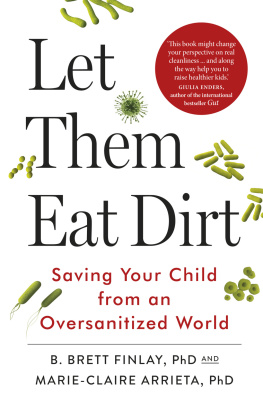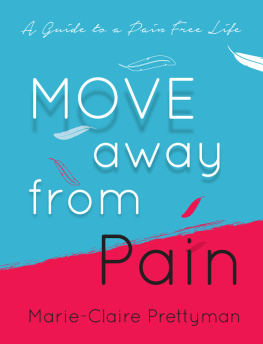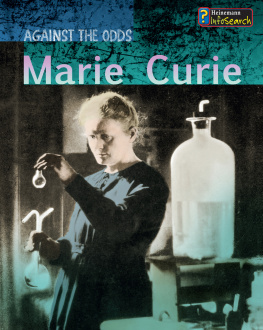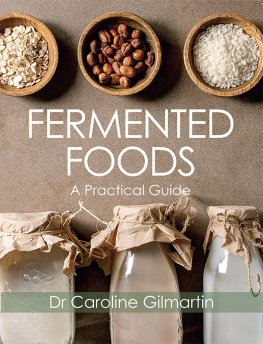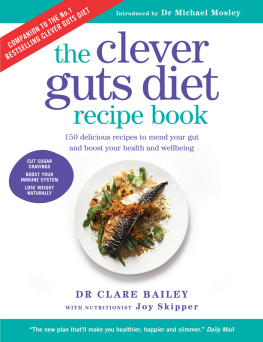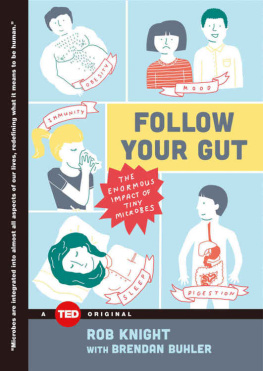This ebook is copyright material and must not be copied, reproduced, transferred, distributed, leased, licensed or publicly performed or used in any way except as specifically permitted in writing by the publishers, as allowed under the terms and conditions under which it was purchased or as strictly permitted by applicable copyright law. Any unauthorized distribution or use of this text may be a direct infringement of the authors and publishers rights and those responsible may be liable in law accordingly.
Epub ISBN: 9781473538634
Version 1.0
Published by Windmill Books 2016
1 3 5 7 9 10 8 6 4 2
Copyright B. Brett Finlay, PhD and Marie-Claire Arrieta, PhD 2016
Design by Steve Godwin
Cover design: Tim Green/ Faceout Studio
Cover photographs: virus by Baris Simsek/ Getty Images; bacillus, pseudomonas, pneumocystis, peptostreptococcus, mycoplasma pneumoniae by Scierpo/ Getty Images
B. Brett Finlay and Marie-Claire Arrieta have asserted their right to be identified as the authors of this Work in accordance with the Copyright, Designs and Patents Act 1988.
First published in the United States by Algonquin Books of Chapel Hill, a division of Workman Publishing in 2016
First published in Great Britain in 2016 by Windmill Books
Windmill Books
The Penguin Random House Group Limited
20 Vauxhall Bridge Road, London, SW1V 2SA
www.penguin.co.uk
Windmill Books is part of the Penguin Random House group of companies whose addresses can be found at global.penguinrandomhouse.com
A CIP catalogue record for this book is available from the British Library
ISBN 9780099510963
To our kids, Jessica, Liam, Marisol, and Emiliano for inspiring us to get the word out that kids need more dirt in their lives.
In the interest of protecting the privacy of individuals, some of the names have been changed in the anecdotes provided in the book. Furthermore, the concepts provided in the book are based on published scientific literature; however, we are not physicians, and licensed doctors should be consulted for medical advice when undertaking any particular diet, treatment, or therapy for parents and/or their children.
Preface
WE ALL WANT what is best for our kids. The problem is that there is no perfect handbook on how to raise them, nor is there any one best way, either. We read books and articles, talk to friends, and try to remember (or forget!) how our parents raised us. Both of us have children and have struggled and muddled through the parenting process the same way everyone does. We are also scientists who have worked with microbes for many years, and we couldnt help but consider how these ever-present microbes influence development as we raised our children. At first we studied microbes that cause disease, and we feared them just like anyone else. But more recently we began taking notice of all the other microbes that live in and on usour microbiota. As we continue to study the microbiota of humans, it is becoming clear that our exposure to microbes is most important when were kids. At the same time, modern lifestyles have made childhood much cleaner than ever before in human history, and this is taking a huge toll on our microbiotaand our lifelong health.
The genesis of this book came from the realization that the studies in our laband the labs of several other researchersprove that microbes really do impact a childs health. What shocked us most was how early this startsthe first one hundred days of life are critical. We knew microbes played a role in well-being, but we had no idea how soon this role began.
Several other factors converged to help convince us to write this book. Claire has young children, and all of her young parent friends were extremely interested in the concept of microbes and how they might affect their kids. Whenever we tell other parents about our work, the questions never ceaseDo I need to sterilize their bottles every time? What kind of soap should I use? We realized that there are many questions out there about microbes and a lot of wrong information.
Brett is married to a pediatric infectious disease specialist (Jane) who was constantly suggesting articles and findings about how microbes affect kids, which led us to realize that since this was such a new field, there was no one source parents could turn to if they wanted to learn more. Not to mention that scientific articles are usually dry, terse things with lots of jargon and, frankly, are terribly boring. However, this new area of research has a lot to offer to people raising children who are not likely to get this important information from dense scientific papers or from studies often misinterpreted by the press. There is a lot of information being produced by some of the best scientists in the world, which we consider extremely useful for the day-to-day decisions we make while raising our children, so we felt compelled to gather it all in one book and make it accessible to the everyday parent.
We start off by explaining a bit about microbes, and then explore what happens to a pregnant womans body in terms of her microbiota and how it affects her child(ren) for life. We then discuss the delivery process, breastfeeding, solid foods, and the first years of life from a microbial perspective. In the middle of the book we cover lifestyle issues (Should I get a pet? What do I do with a dropped pacifier?) and the use of antibiotics. The latter part of the book features chapters dealing with specific diseases that are growing by leaps and bounds in our society, and the microbes that seem to affect them. These include obesity, asthma, diabetes, intestinal diseases, behavioral and mental health disorders such as autism, and a whole array of diseases in which, even five years ago, we had no clue microbes might be involved. Readers may want to skip over particular chapters if you feel that they are not applicable to you. However, each one is full of information that will educate you about the processes involved in these health issues. We think the section on the gutbrain connection () is particularly interesting in its exploration of how microbes might affect the brain and mental disorders. We finish the book with a discussion on vaccines and a futuristic view of what we can expect in terms of new therapies and medical interventions in the next few years. Each chapter ends with a few Dos and Dontsthese are not meant to be comprehensive medical advice, but suggestions about things to do (or not do) that are based on current scientific evidence.
What we have learned in writing this book, and what we hope to convince readers of, is that microbes play a very large part in our childrens lives. Even as scientists in the field, we were stunned to discover some of the profound roles these microscopic bugs have in normal childhood development. No doubt many of these findings, and many more to come, will have a major impact on how we think about raising our children.
B. Brett Finlay and Marie-Claire Arrieta
PART ONE
We Are More
Microbe
Than Human
1: Children Are Microbe Magnets
Microbes: Kill Them All!
Microbes are the smallest forms of life on Earth. They encompass bacteria, viruses, protozoa, and other types of organisms that can be seen only with a microscope. Microbes are also the oldest and most successful forms of life on our planet, having evolved long before plants and animals (plants and animals actually evolved from bacteria). Although invisible to the naked eye, they play a major role in life on Earth. There are an astounding 5 x 10 (thats 5 followed by 30 zeroes!) bacteria on Earth (for comparison, there are only 7 x 10 stars in the universe). Collectively, these microbes weigh more than all the plants and animals on the entire planet combined. They can live in the harshest and most inhospitable environments, from the Dry Valleys of Antarctica to the boiling hydrothermal vents on the seafloorthey can even thrive in radioactive waste. Every form of life on Earth is covered in microbes in a complex yet usually harmonious relationship, making germophobia the most futile of phobias. Unless you live in a sterile bubble without any contact with the outside world (which is a time-limited proposition; see Bubble Boy, ), there is no escaping microbial lifewe live in a world coated in a veneer of microbes. For every single human cell in our bodies, there are ten bacterial cells inhabiting us; for every gene in our cells, there are one-hundred fifty bacterial genes, begging the question: Do they inhabit us or is it really the other way around?

